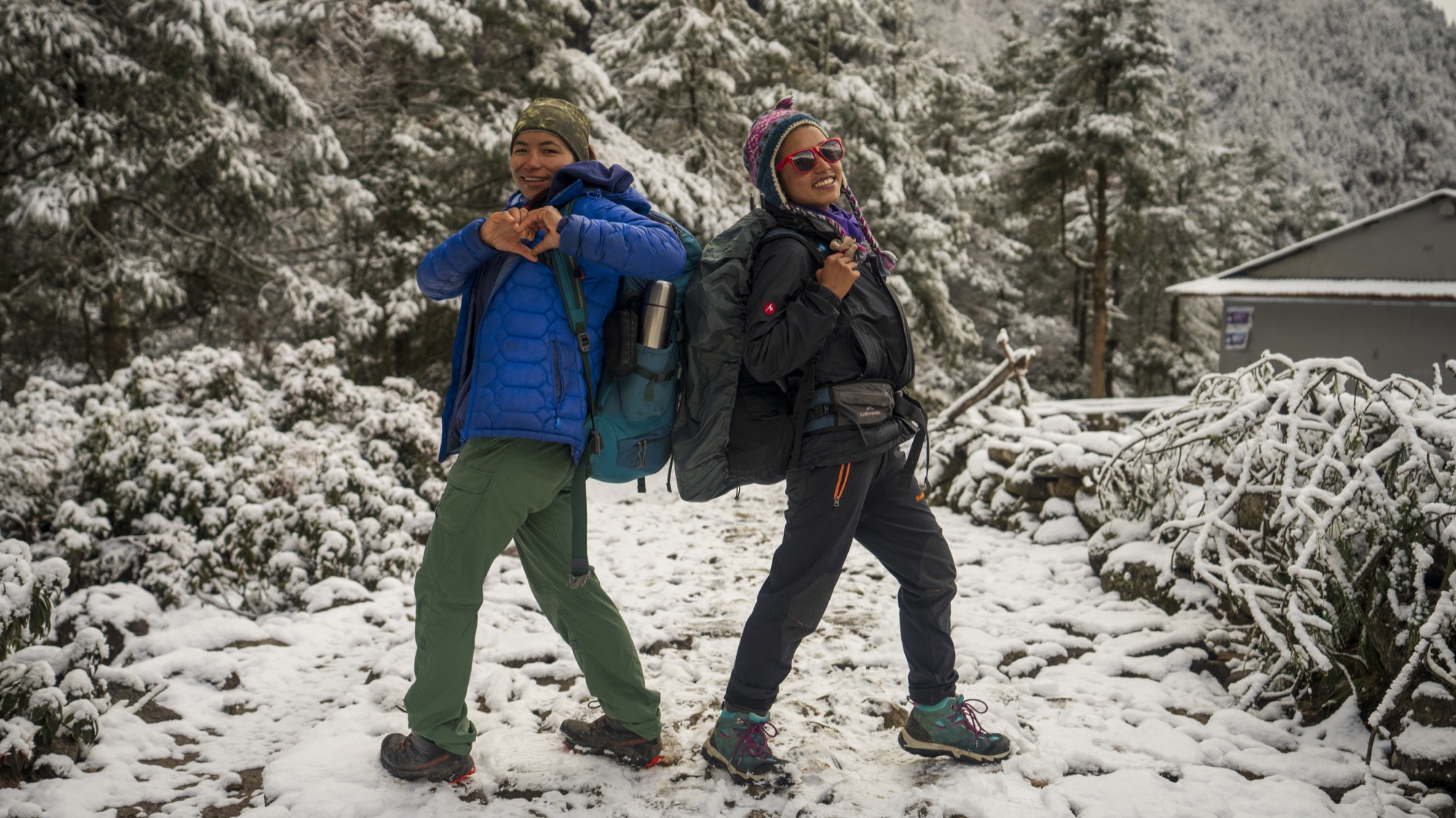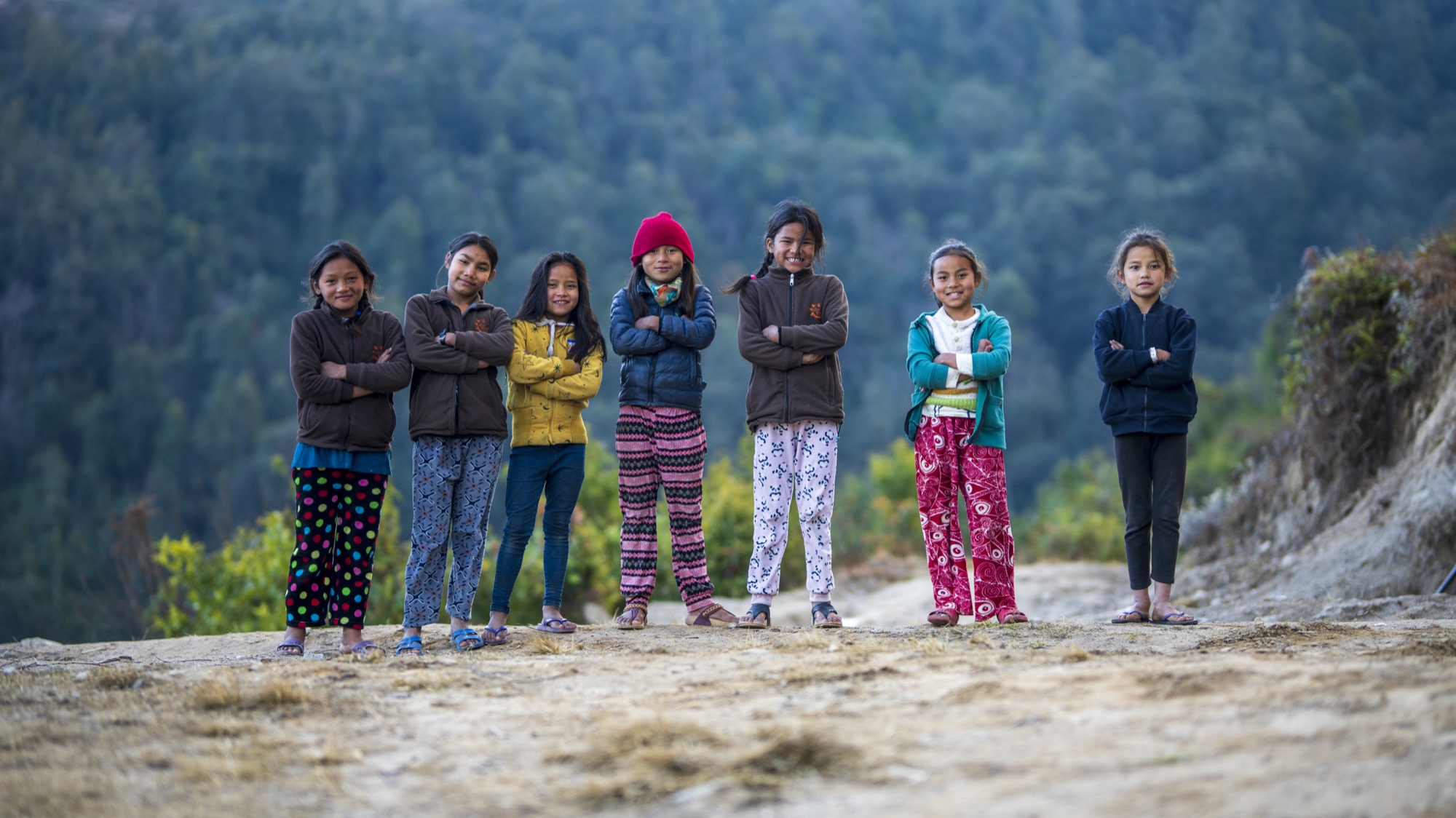We were very pleased to hear the news this month that Tania Verbeeck, filmmaker and cousin of Global Leadership Fellow Joy Gillies, was awarded winner of the best documentary at the inaugural Sony Film Festival.
Tania’s film, Women Take on Nepal, is an inspirational (and incredibly scenic) story about two brave and resilient young women from the Nepalese village of Batase who are working to change the culture for women in their village by becoming independent through trekking and education.
The story behind the film is equally fascinating. We spoke to Tania and Som Tamang, who founded a charity, Friends of Himalayan Children, to support education in Batase and then the trekking company, Take on Nepal, that is featured in the film.
Today, Som lives in Cairns in north Queensland, however he was born and grew up in Batase, 50 kilometres east of Kathmandu. Like very many similar villages in Nepal, the people of Batase largely live as subsistence farmers, with children spending most of their time on farming and household work from a young age. Understandably, education in these communities is not traditionally a high priority simply because it does not put food on the table.
For girls, education is an even lower priority. Consistent with Nepalese culture, children in this environment marry at a very young age. After a wedding, the bride joins her husband’s family to live and work with them. Unfortunately, in recent decades, tens of thousands of young Nepalese girls have been sent to India to work and earn a basic income for their families. Unknown to their families, many of these girls are sold into brothels.
From a very young age, Som, with alertness way beyond his years, realised that many of the girls who returned from India were not well, and that many of them died within a few years. Some did not return at all. He also recognised that the men who came to the village to recruit young women were not nice people and seemed to be taking advantage of their parents’ naivety.
As a ten or eleven-year-old, Som packed a small bag and, without telling his parents, followed a young man from Batase who had family in Kathmandu. He was promised that this family would adopt him, but instead they enslaved him. He escaped and returned to Batase after a couple of years, where he met his newborn brother, Dinesh.
However, by now Som was determined that he (and his siblings) needed an education, and that that wasn’t going to happen in Batase, so he left for Kathmandu again. He worked as a labourer, then a trekking porter and eventually a trekking guide. It was in this work that he learnt to speak English and Japanese, and parts of other languages. Ultimately, Som decided he wanted to see more of the world, ending up in Cairns where he continued his education while working, sending money back to his family and doing some initial fundraising for Batase.
While studying at university, Som decided to set up a formal charity with the initial aim of improving the school in Batase to provide more than just a basic primary-level education to the children of the village. The ultimate aim was to improve the prospects of these young people – boys and girls – and to reduce the need for girls to be sent away to India (or, increasingly, the Middle East and Eastern Europe) to earn money.
So it was that Friends of Himalayan Children was born in 2008. The charity funded new classrooms and the hiring of teachers, expanding the school’s capability from Grade 3 to Grade 8 and, later, to Grade 10. A hostel was also built to provide housing to children from even more remote villages for whom travelling to school was impractical. This accommodation became even more important after the 2015 earthquake which left many of these children as orphans or with only one parent. (The original school and hostel were both destroyed in the earthquake, the charity’s funds have been used to replace them in the period since.)

But Som wasn’t done yet.
Also while at university, he noticed the growing number of programs offering young people the chance to travel to a developing country and work as a volunteer, for a fee. He decided that he could offer similar programs in support of his charity, but providing better value to both the volunteers and the recipients of their work. Out of that, his next organisation, Take on Nepal, was born.
He then saw another opportunity. He noticed that many of the people travelling to Nepal to do volunteer work would stay on for a trekking holiday. Having already been a trekking guide, he knew what was involved and added numerous trekking options to what Take on Nepal was offering.
This, in turn, created another opportunity: to train and hire graduates of the Batase school – including young women, who traditionally have not worked as either porters or guides. (The inspiring stories of two of these women, Kamala and Phulmaya, are at the heart of Tania’s film.) Providing them with well-paid work is helping those people to go to university in Kathmandu and will very soon see the graduation of Batase’s first ever bachelor degree recipients.
In short, Som’s determination and leadership has led to the creation of a charity supporting his village of Batase, the expansion (and rebuilding) of a school and hostel in the village and the establishment of a volunteering and trekking company that now provides work and further education for the school’s graduates, nurturing young women and men as a new generation of leaders.
And he’s done all of this while building his own personal life in Cairns, including raising three young children with his partner Susan (who’s also involved in Take on Nepal).
It’s hard to think of a better example of the willingness we wrote about a couple of months ago!
If you’re interested in supporting Som’s work, an easy way would be to make a donation to the Friends of Himalayan Children. And of course as the world starts up again, you could consider the numerous trekking and volunteering opportunities offered by Take on Nepal.
In the meantime, make sure you spend a wonderful and inspiring 20 minutes watching Tania’s film, Women Take on Nepal, and look out for future films that will tell more of the story of Som, his village and its people.
Photos by Tania Verbeeck

